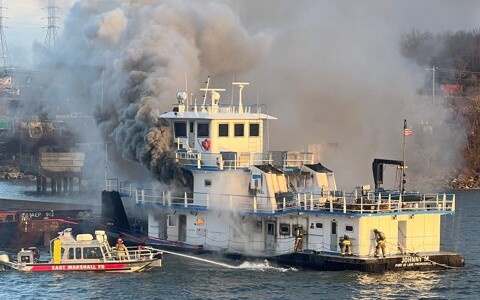An engine-room fire aboard a towing vessel on the Tennessee River last year caused $3 million in damage, and federal investigators say a lack of structural fire protection played a major role in the incident.
The fire broke out on Jan. 30, 2024, aboard the Johnny M while the vessel was pushing four barges near Grand Rivers, Ky., according to a new report from the National Transportation Safety Board (NTSB). All six crewmembers abandoned ship to a Good Samaritan vessel after onboard efforts to contain the fire with a CO2 fixed-fire-extinguishing system failed. Local fire departments extinguished the blaze. No injuries or pollution were reported.
NTSB investigators found that the vessel was not outfitted with protective covers for its main engine combustion air intake openings. NTSB said when the port main engine failed, the fire spread through flexible ducting that extended from the engine stacks down to the engine room. The ducting lacked insulation or fire barriers, allowing oxygen to feed the fire and carbon dioxide to escape from the suppression system, the report noted.
“The flexible ducting providing combustion air to the main engines on board the Johnny M... did not have any insulation or other barriers to prevent the passage of smoke, heat, and fire—known as structural fire protection,” the report stated.
The NTSB emphasized the importance of identifying and protecting potential openings in fire-protected spaces to ensure the effectiveness of onboard fire suppression systems.
Marine Investigation Report 25-15 is available on the NTSB website.




